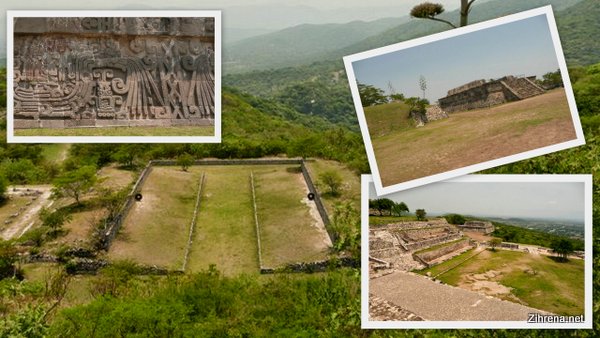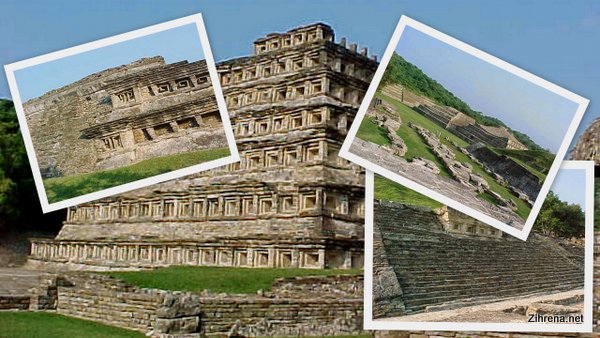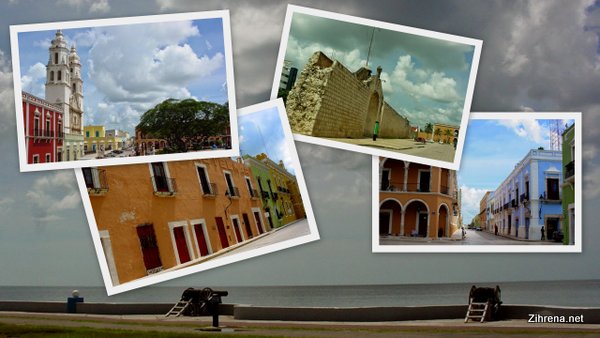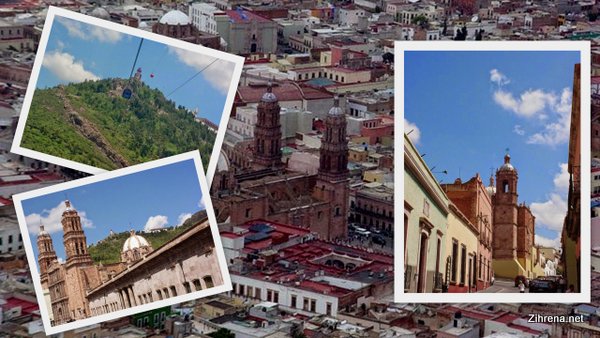The UNESCO World Heritage Sites: Mexico
Of all the countries in the Americas, Mexico can boast of having within its boundaries the highest number of UNESCO World Heritage sites, counting both its cultural and natural sites. Mexico, as of May 25, 2014, has had thirty-two sites inscribed into the World Heritage list; the United States has twenty-one, followed by Brazil with twenty.
It’s one of my goals to visit as many of these sites as I can. Right now, I’m at seventeen on the inscribed list–more than half-way–and have also visited several on the tentative list.
World Heritage is the designation for places on Earth that are of outstanding universal value to humanity and as such, have been inscribed in the World Heritage List to be protected for future generations to appreciate and enjoy.
“Frequently Asked Questions,” UNESCO United Nations Educational, Scientific, and Cultural Organization, World Heritage Convention website, http://whc.unesco.org/en/faq/
The UNESCO World Heritage Cultural Sites of Mexico
- Agave Landscape and Ancient Industrial Facilities of Tequila (2006): This area includes the towns of Tequila, Arenal, and Amatitan and the surrounding blue agave fields and tequila distilleries
- Ancient Maya City of Calakmul, Campeche (2002): An important and extensive archaeological site of the Maya civilization in the Calakmul Biosphere Reserve on the Yucatan peninsula.
- Archaeological Monuments Zone of Xochicalco (1999): A settlement located in an area of natural hills in the state of Morelos, just south of Cuernavaca, founded in the second half of the 7th century A.D.

Xochicalco, south of Cuernavaca, Morelos
- Archaeological Zone of Paquimé, Casas Grandes (1998): An archaeological zone located at Casas Grandes, Chihuahua, in northern Mexico that played an important role in trade and cultural exchange between the Pueblo of the south-west United States and northern Mexico and the Mesoamerican civilizations to the south.
- Camino Real de Tierra Adentro (2010): A 1400 kilometer stretch of the Silver Route or Royal Inland Road that was used as a trade route between the mines of Central Mexico and the markets and suppliers of Europe and the United States via Texas and New Mexico.
- Central University City Campus of the Universidad Nacional Autónoma de México (UNAM) (2007): The buildings in the core of the university campus was built by more than sixty architects from 1949 to 1952.
- Earliest 16th-Century Monasteries on the Slopes of Popocatepetl (1994): A collection of 14 Franciscan, Dominican, and Augustinian monasteries built on the lower slopes of the Popocatepetl volcano are examples of the new open architectural style followed by the early missionaries.
- El Tajin, Pre-Hispanic City (1992): An important cultural center on the Gulf of Mexico with architecture unique in Mesoamerica featuring carved reliefs and niches.

El Tajin Ruins
- Franciscan Missions in the Sierra Gorda of Querétaro (2003): The Franciscan missions at Jalpan de Serra, Tancoyol, Landa de Matamoros, Tilaco, and Concá in Mexico’s Sierra Gorda.
- Historic Centre of Mexico City and Xochimilco (1987): The architecture of Mexico City’s historic center and the canals and artificial islands of Xochimilco.
- Historic Centre of Morelia (1991): A blend of Renaissance, Baroque, and neoclassical architectural elements in pink stone.
- Historic Centre of Oaxaca and Archaeological Site of Monte Albán (1987): A contrast of the creations of the Olmec, Zapotec, and Mixtec civilization on a hilltop and colonial town planning on the valley floor.
- Historic Centre of Puebla (1987): There is a fusion of European and American architectural elements that is peculiar to the Baroque district of Puebla.
- Historic Centre of Zacatecas (1993): Silver mining center founded in 1546 known for harmony of design and the Baroque influence on façades such as its pink-stone Cathedral.
- Historic Fortified Town of Campeche (1999): A notable example of a fortified Spanish harbor town with a well-preserved historical center.

The Fortified Town of Campeche
- Historic Monuments Zone of Querétaro (1996): The Spanish geometrical street layout and the winding, convoluted alleys of the Indian quarters exist side-by-side in this outstanding colonial city in Central Mexico.
- Historic Monuments Zone of Tlacotalpan (1998): A sixteenth century Spanish colonial river port on the Mexico’s Gulf coast of Mexico that features wide streets and multi-colored colonnaded homes.
- Historic Town of Guanajuato and Adjacent Mines (1988): Guanajuato’s Baroque and neoclassical architecture are considered among the finest in the Americas; also notable are its subterranean streets under the city center and the installations and shafts of the surrounding colonial silver mines.
- Hospicio Cabañas, Guadalajara (1997): A remarkable nineteenth century haven for the elderly, disadvantaged, and handicapped, the chapel of which was painted in the early twentieth century with the murals of José Clemente Orozco.
- Luis Barragán House and Studio (2004): Built in 1947-48, Architect Luis Barragán’s house is an example of the integration of modern and traditional influences in both building and gardens.
- Prehispanic City and National Park of Palenque (1987): Palenque displays the incredible achievements of the Maya in art and architecture, and gives important insights into their mythology, rituals, and science.

The Mayan Archaeological Site of Palenque
- Prehispanic City of Chichen-Itza (1988): Some of the most important examples of Mayan and Toltecan monuments and construction techniques are found at this impressive Yucatecan archaeological site.
- Prehispanic City of Teotihuacan (1987): A monumental heritage from its people for modern Mexico and the world, Teotihuacan was built between the first and seventh centuries AD; notable are the massive Pyramids of the Sun and Moon, the Temple of Quetzalcoatl, and the geometrical layout of its structures.

Teotihuacan Archaeological Zone, Mexico
- Prehispanic Town of Uxmal (1996): A Mayan site dating from about 700 AD is considered significant example of the richness of late Mayan social and economic structure.
- Prehistoric Caves of Yagul and Mitla in the Central Valley of Oaxaca (2010): In these prehistoric caves haves been found ten-thousand-year-old seeds of the gourd and squash family as well as corn cob fragments considered to be the earliest known evidence of plant domestication in North America.
- Protective town of San Miguel and the Sanctuary of Jesús Nazareno de Atotonilco (2008): The architecture of the sixteenth century fortified colonial town and the nearby Jesuit sanctuary display the transition from Mexican Baroque to neoclassical styles. The area was considered a cultural melting pot of Spanish, Creole, and Amerindian influences.
- Rock Paintings of the Sierra de San Francisco (1993) : Located in the Sierra de San Francisco in the El Vizcaino reserve, Baja California, these ancient rock paintings dating from 100 BC to AD 1300 are some of the finest and most well preserved.
The natural sites found in Mexico are:
- El Pinacate and Gran Desierto de Altar Biosphere Reserve (2013): A dramatic natural landscape that features the black and red lava flows of the dormant volcanic Pinacate Shield and the shifting dunes of the Gran Altar Desert that can reach heights of 200 meters.
- Islands and Protected Areas of the Gulf of California (2005): The 244 gorgeous islands, islets, and coastal areas located in the Gulf of California or Sea of Cortez comprise an area that is home to 695 vascular plant species, 891 fish species, 39 percent of the world’s total number of marine mammal species, and one third of the world’s marine cetacean species.
- Monarch Butterfly Biosphere Reserve (2008): Every winte,r an overwintering of millions of monarch butterflies from parts as far away as Canada takes place in the oyamel fir forests of Central Mexico.
- Sian Ka’an (1987): A biosphere reserve in the Yucatan peninsula that encompasses tropical forests, stands of coastal mangroves, marshes, and a marine barrier reef, giving shelter to more than 300 species of birds and many land vertebrates.
- Whale Sanctuary of El Vizcaino (1993): A marine sanctuary in central Baja California comprising coastal lagoons that are reproduction and wintering sites for grey whales, harbor seals, California sea lions, northern elephant seals, and blue whales.
For more information on Mexico’s World Heritage sites and detailed descriptions of each of the Mexican properties inscribed in the list, visit http://whc.unesco.org/en/statesparties/mx

Zacatecas
The UNESCO Tentative List for Mexico
Mexico also has an additional twenty-five properties on UNESCO’s tentative list. These include, amongst many others: Chapultepec woods, hill, and castle in Mexico City; the church of Santa Prisca and surroundings in Taxco, Guerrero; the aqueduct of Padre Tembleque in the state of Mexico; The Diego Rivera and Frida Kahlo’s home and studio museum in Mexico City; the Huichol route through the sacred sites to Huiricuta, a region near Real de Catorce, San Luis Potosí; Cuetzalan, Puebla, and its historical, cultural, and natural surroundings; Las Pozas, Xilitla, in the Huasteca Potosina; the Tehuacan-Cuicatlan Biosphere Reserve bridging the state of Oaxaca and Puebla; and the Las Labradas, Sinaloa, archaeological site.